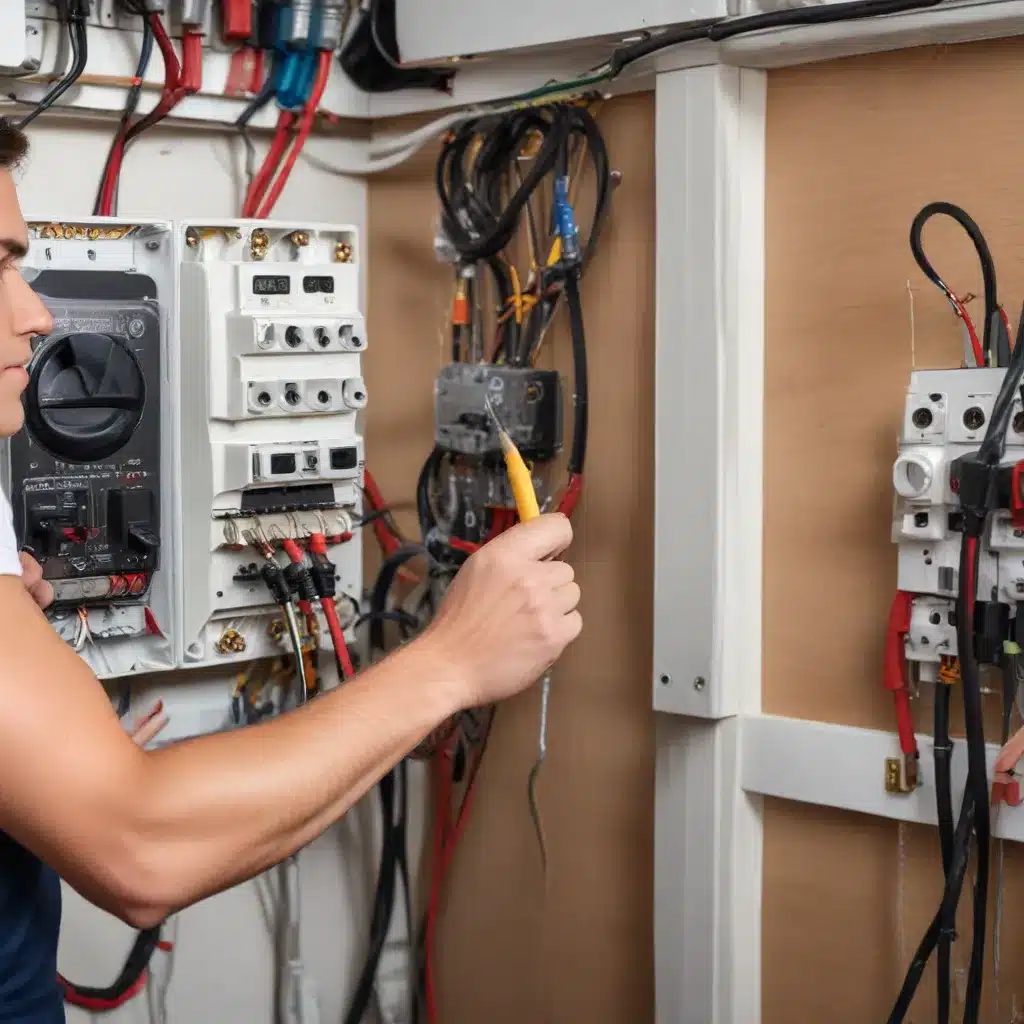As an experienced home improvement consultant, I know that upgrading your home’s electrical system can be a daunting task, especially for the “reluctant renovator.” However, with the right know-how and preparation, many DIY-inclined homeowners can confidently tackle certain electrical projects themselves. In this comprehensive guide, we’ll explore when it’s appropriate to take on DIY electrical upgrades, the necessary considerations, and the steps to ensure a successful and safe project.
Electrical Safety Fundamentals
Before diving into any electrical work, it’s crucial to establish a solid understanding of electrical safety. Electricity can be incredibly dangerous if not handled properly, so familiarize yourself with the basics, such as the importance of circuit breakers, grounding, and GFCI (ground fault circuit interrupter) outlets. Ensure you have the necessary personal protective equipment (PPE), including insulated gloves, safety goggles, and a voltage tester. Electrical work should never be taken lightly, so err on the side of caution and consult a licensed electrician if you’re ever unsure.
Necessary Tools and Supplies
Depending on the scope of your project, you’ll need to gather the appropriate tools and materials. Some essential items may include a wire stripper, utility knife, screwdrivers, pliers, a voltage tester, a multimeter, and the necessary electrical components (e.g., circuit breakers, wire, conduit, junction boxes). Make sure to source high-quality products from reputable suppliers to ensure safety and compliance with local building codes.
Assessing Project Complexity
Not all electrical upgrades are created equal. Some tasks, such as replacing a light fixture or installing a new outlet, are relatively straightforward and well within the realm of DIY. However, more complex projects, like upgrading the main service panel or rewiring a significant portion of your home, often require the expertise of a licensed electrician. When evaluating a potential DIY electrical project, consider the level of difficulty, the risks involved, and your own skill level. If you’re ever unsure, it’s always better to err on the side of caution and seek professional assistance.
When to Undertake DIY Electrical Work
Simple Upgrades and Replacements
For homeowners comfortable with basic electrical work, simpler projects like swapping out a light fixture, installing a new ceiling fan, or adding an additional outlet can often be tackled as a DIY endeavor. These types of upgrades typically involve working with existing circuits and do not require extensive modifications to the main electrical system.
Navigating Local Regulations
Before embarking on any DIY electrical project, it’s crucial to familiarize yourself with your local building codes and regulations. In many areas, homeowners are permitted to perform certain electrical work, but may be required to obtain permits and undergo inspections. Be sure to research your jurisdiction’s guidelines to ensure your project is compliant and safe.
Recognizing Limitations
While DIY electrical work can be rewarding and cost-effective, it’s important to recognize the limitations of your skills and experience. Some projects, such as upgrading the main service panel or rewiring an entire home, are best left to licensed professionals. Attempting complex electrical work without the proper training and expertise can jeopardize the safety of your home and its occupants.
Preparing for a DIY Electrical Project
Comprehensive Planning
Before you begin any DIY electrical upgrade, take the time to thoroughly plan the project. Carefully assess the existing electrical system, make a detailed list of the required materials, and create a step-by-step plan of action. This comprehensive planning will help ensure a smoother and more successful project.
Sourcing Quality Materials
When it comes to electrical components, it’s essential to use high-quality, code-compliant products. Avoid cheap, substandard materials, as they can pose serious safety risks. Seek out reputable suppliers and manufacturers, and double-check the specifications to ensure compatibility with your home’s electrical system.
Permitting and Inspections
Depending on your local regulations, you may be required to obtain permits and schedule inspections for your DIY electrical project. This process is in place to ensure the work is completed safely and up to code. Research the necessary permits, submit the required documentation, and schedule any required inspections well in advance to avoid delays.
Executing the Electrical Upgrade
Step-by-Step Procedures
When it’s time to tackle the actual electrical work, follow a methodical, step-by-step approach. Refer to reliable sources, such as manufacturer instructions or online tutorials, to guide you through the process. Remember to de-energize the circuit, test for power, and follow all safety protocols to minimize the risk of accidents or damage.
Troubleshooting and Testing
Inevitably, you may encounter unexpected challenges or issues during the project. Remain calm and methodical in your troubleshooting approach. Utilize your voltage tester and multimeter to identify and resolve any problems. Thoroughly test each completed circuit to ensure proper functionality before restoring power.
Ensuring Code Compliance
Throughout the project, be mindful of local building codes and regulations. Consult your local authorities or a licensed electrician if you’re ever unsure about code requirements. Proper code compliance helps to ensure the safety and longevity of your electrical upgrades.
Embarking on DIY electrical upgrades can be a rewarding and cost-effective way to improve your home, but it’s essential to approach the task with caution and proper preparation. By understanding the fundamentals of electrical safety, evaluating the complexity of the project, and following best practices, you can confidently tackle certain DIY electrical upgrades while recognizing the limitations of your skills. Remember, when in doubt, it’s always wise to consult a licensed professional to ensure the safety and longevity of your home’s electrical system.
For more renovation inspiration and practical tips, be sure to visit Reluctant Renovator – your one-stop resource for all things home improvement.




